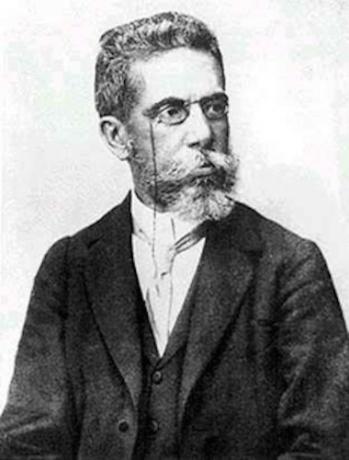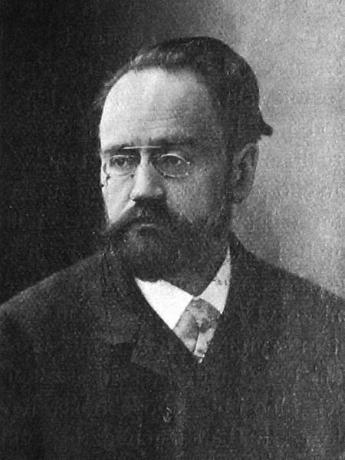O realism in Brazil was opened, in 1881 (almost 30 years after appearing in Europe), with the book publicationThe Posthumous Memoirs of Bras Cubas, in Machado de Assis (1839-1908). If in Europe, the emergence of this literary movement was associated with the consequences of Industrial Revolution, in Brazil, it was linked to the decay of the economy based on slavery practices, discontent with the monarchy and economic dependence on rich countries.
Realism is a anti-romantic period style which privileges objectivity, the analysis of collective behaviors, the critique of reality and, also, of the nineteenth-century bourgeoisie. Thus, its authors are aware of the events of their present moment and the psychological motivations of their characters, involved in adultery, oppression and corruption.

Historical context of realism in Brazil
In the nineteenth century, the adherence of Brazilian writers to realist aesthetics is related to:
the decline of the economy with the prohibition of the slave tradein 1850;
the increasing influence of progressive politicians in opposition to conservatives and slavers;
the strengthening of republican movement, which threatened the old monarchic regime;
The Paraguay War (1864-1870), which, due to high financial expenses, generated an increase in the external debt and Brazilian dependence on rich countries.

THE romantic aesthetic, therefore, went into decay, because its origin was linked to the boastful nationalism (exaggerated patriotism), inspired by the independence of Brazil, which took place in 1822. By resorting to idealization, Brazilian romanticism sought to awaken a feeling of unconditional nationalism in the population, which prevented a more critical view of Brazilian reality. The exception was the romantic third generation, which occupied a transitional place between romantic and realistic aesthetics.
All this led some Brazilian writers to carry out a distancing from the romantic style, as is the case of the writer Machado de Assis, whose literary production, in its first phase, was clearly linked to the romanticism. Thus, in 1881, he inaugurated realism in Brazil with his work The Posthumous Memoirs of Bras Cubas.
Main characteristics of realism in Brazil
O realism it is a style of the epoch that, avowedly, is opposed to the previous style, that is, romanticism, therefore, it is anti-romantic, because:
it values objectivity (rationality) and not subjectivity (emotivity);
has a particular interest in collective behavior, as opposed to romantic individualism;
it portrays the everyday and monotonous life of the bourgeois class rather than extolling its heroic qualities;
criticizes reality and opposes romantic escapism (escape from reality);
attacks the bourgeois way of life, its hypocrisy and futility;
it is interested in the functioning and organization of society and not in individual concerns;
focuses on the present moment, without the idealization of the past carried out by the previous style;
analyzes the characters' psychological motivations, which are built with greater complexity, instead of repeating romanticist stereotypes, such as the figure of the villain as opposed to the good guy;
works on these main themes: adultery, oppression and corruption.
Read too: Objective and subjective description: what are the structural differences?
Main authors of realism in Brazil
The only realist Brazilian author is the writer Machado de Assis. During the period in which the realism happened in Brazil, the other anti-romantic writers adhered to another strand of realism, naturalism. Therefore, Machado de Assis, in his second phase, is a purely realist writer, since he rejects the scientific characteristics of naturalism.

Machado de Assis, in your second level, wrote the following novels:
The Posthumous Memoirs of Bras Cubas (1881)
Dom Casmurro (1899)
Quincas Borba (1891)
Esau and Jacob (1904)
Aires Memorial (1908)
Read too: Rachel de Queiroz – author influenced by realism and naturalism
realism x naturalism
Naturalism in Europe was opened with the book of essays the experimental novel (1880), by the French writer Émile Zola (1840-1902), in which he explains the bases of the movement. already in the Brazil, the romance the mulatto, by Aluísio Azevedo, from 1881, was the first naturalist work published.

The period style naturalism is considered a evolution of realistic aesthetics, well, he is also realistic. However, realism does not have the main defining characteristic of naturalism, which is the use of scientific theories to explain the behavior of the characters.
From this perspective, Hippolyte Taine (1828-1893), French literary critic, publicized the concept of "determinism", which started to direct the writing of naturalist authors. According to him, the individual was socially conditioned:
1. for the breed of which he was a part;
2. fur quite in which he found himself; and
3. fur time history in which he lived.
Therefore, the characters were created (and should be analyzed) based on this perspective, that is, these factors (race, environment and time) influenced the behavior and consequently, defined the fate of the characters. However, it is necessary to emphasize that scientific theories of a racist nature, which prevailed in the late nineteenth century, were wrong and are outdated.
Thus, we can say that Machado de Assis was not a naturalist writer, since he did not use these theories in his works. On the contrary, they were the target of his irony, as can be seen in his work the alienist (1882), in which the excesses of science are clearly criticized.
In novels by Aluísio Azevedo and Adolfo Caminha, the deterministic theory is quite evident. For example: when black characters Bertoleza (in the tenement) and Amaro (in good nigger) are described as belonging to an "inferior race", or when the tenement (in the tenement) it's the navy environment (in Good Creole) are indicated as corrupting means. Thus, these works must be read based on their historical context.
Summary of realism in Brazil
Discontent with the monarchy and the increase in the external debt propitiated the emergence of realism in Brazil.
Realism is anti-romantic and criticizes the nineteenth-century bourgeoisie.
Main themes of realism: adultery, oppression and corruption.
The Posthumous Memoirs of Bras Cubas, by Machado de Assis, inaugurated realism in Brazil.
Naturalism uses scientific theories in the composition of characters, which does not occur in realism.
The French critic Hippolyte Taine was responsible for the dissemination of the concept of “determinism”, which guided the writing of naturalist authors.
Determinism defends that the individual is socially conditioned by race, environment and historical moment of which he is a part.
The main Brazilian realist and naturalist authors are: Aluísio Azevedo, Adolfo Caminha, Raul Pompeia and Júlio Ribeiro.
Image credit
[1] Ediouro (Reproduction)


